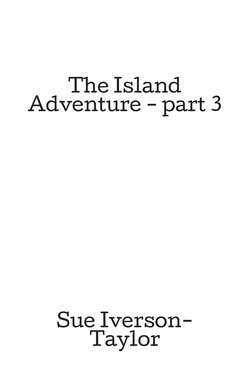Читать книгу The Island Adventure - part 3 - Sue Iverson-Taylor - Страница 2
More on Corsica
ОглавлениеA Little Bit About Corsica…
Corsica is an island in the Mediterranean Sea belonging to France. It is located west of Italy, southeast of the French mainland and north of the Italian island of Sardinia. Mountains make up two-thirds of the island. It is 183 kilometres (114 mi) long at longest, 83 kilometres (52 mi) wide at widest, has 1,000 kilometres (620 mi) of coastline and more than 200 beaches.
Corsica is one of the 27 régions of France, although the island is separated from the continental mainland by the Ligurian Sea and is closer to Italy than to the French mainland.
Corsica is split into two departments, Haute-Corse (Upper Corsica) and Corse-du-Sud (Southern Corsica).
After a brief occupation by the Carthaginians, colonization by the ancient Greeks, and an only slightly longer occupation by the Etruscans, it became a province of the Roman Empire.
After rule from the Republic of Genoa starting in 1282, Corsica was briefly an independent Republic from 1755 until its conquest by France in 1769. The French emperor Napoléon Bonaparte was born in 1769 in the Corsican capital of Ajaccio. His ancestral home, Casa Buonaparte, is today used as a museum. The northern town of Calvi claims to be the birthplace of the explorer Christopher Columbus.
In 1814, near the end of the Napoleonic Wars, the island was briefly occupied by British troops. The Treaty of Bastia gave the British Crown sovereignty over the island but it was later repudiated by Lord Castlereagh, who insisted that the island should be returned to a restored French monarchy.
Following the collapse of France in 1940, Corsica was occupied by Italian and German forces but after the Italian armistice in September 1943, Italian and Free French Forces pushed the Germans out of the island, making of Corsica the first French Department to be freed. Subsequently, the US military established 17 airfields, nicknamed "USS Corsica", which served as bases for American tactical bomber groups attacking targets in German-occupied Italy.
During the May 1958 crisis, French paratroopers landed on Corsica on 24 May, garrisoning the French island in a bloodless action called "Operation Corse".
Between the late fifties and the seventies tensions grew between the inhabitants and the French government. Rising tension marked the beginning of the armed struggle of the Nationalists against the French government. Ever since, Corsican nationalism has been a feature of the island's politics, with calls for greater autonomy and protection for Corsican culture and the Corsican language and flares of raids and killings, culminating with the assassination of Prefect Claude Érignac in 1998.
In 2013, Corsica hosted the first three stages of the 100th Tour de France, which passed through the island for the first time in the event's history.
http://en.wikipedia.org/wiki/Corsica
A Little Bit About Sardinia…
Sardinia is the second largest island in the Mediterranean Sea (after Sicily and before Cyprus) and an autonomous region of Italy, with its capital in the largest city, Cagliari. It is about three times the size (area) of Corsica.
The coasts of Sardinia are generally high and rocky, with long, relatively straight stretches of coastline, many outstanding headlands, a few wide, deep bays, many inlets and with various smaller islands off the coast. The island has an ancient geoformation and unlike Sicily and mainland Italy, is not earthquake-prone. The mountain ranges and plateaux are separated by wide valleys and flatlands.
